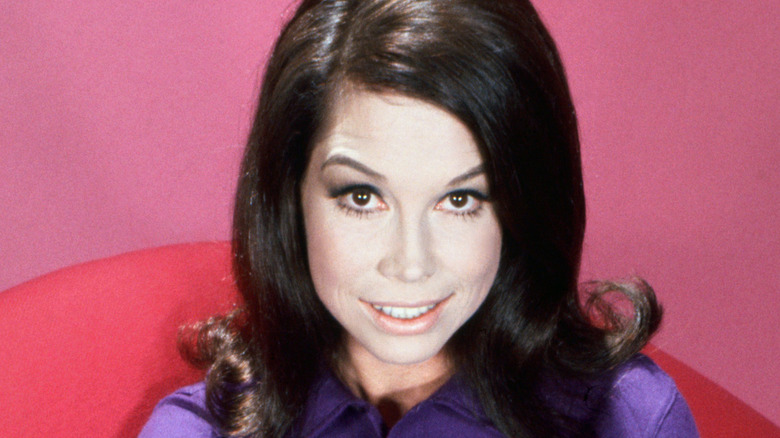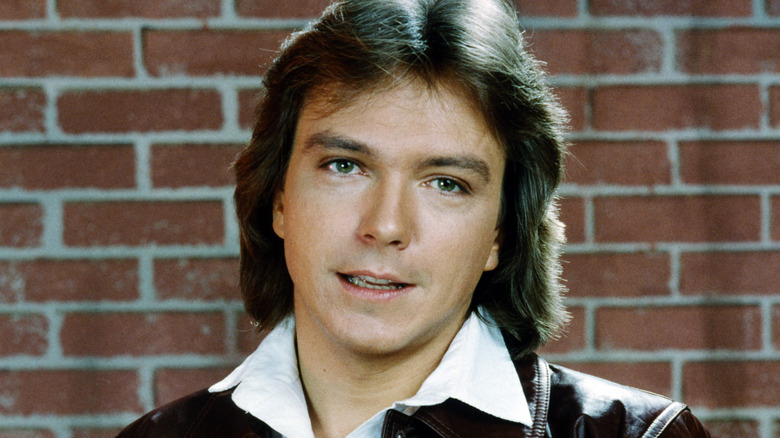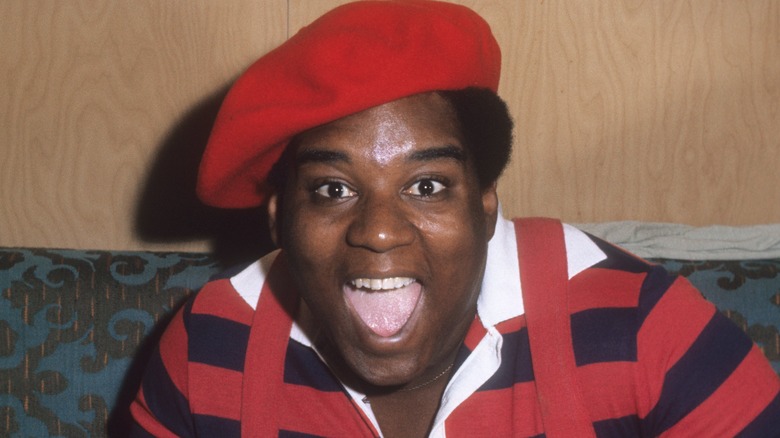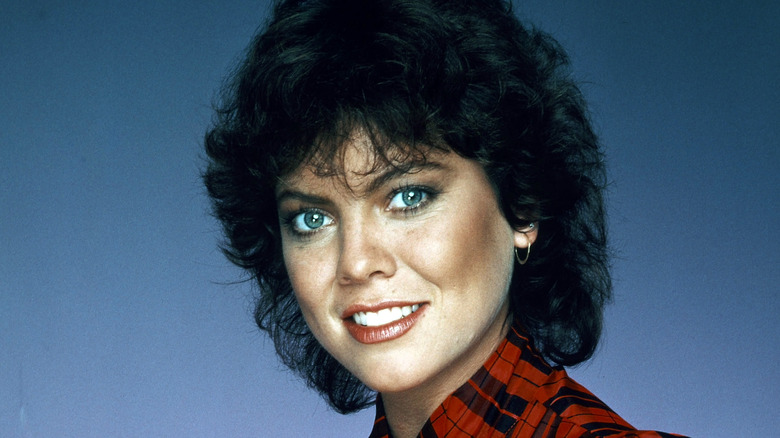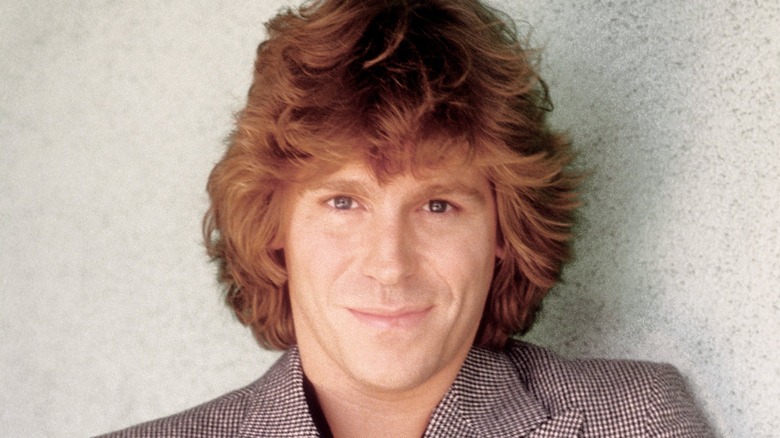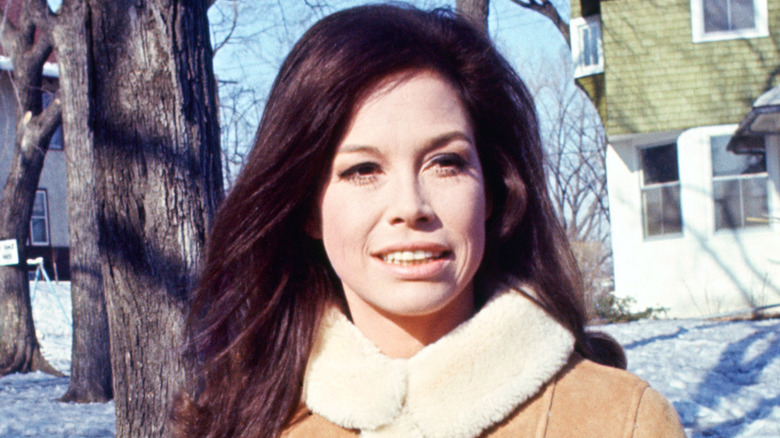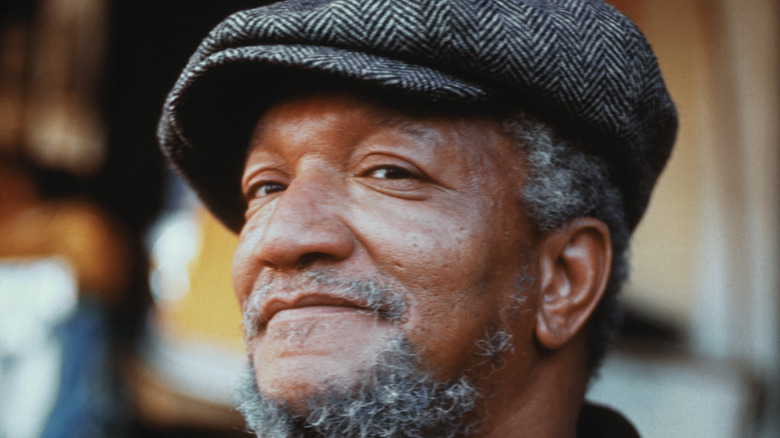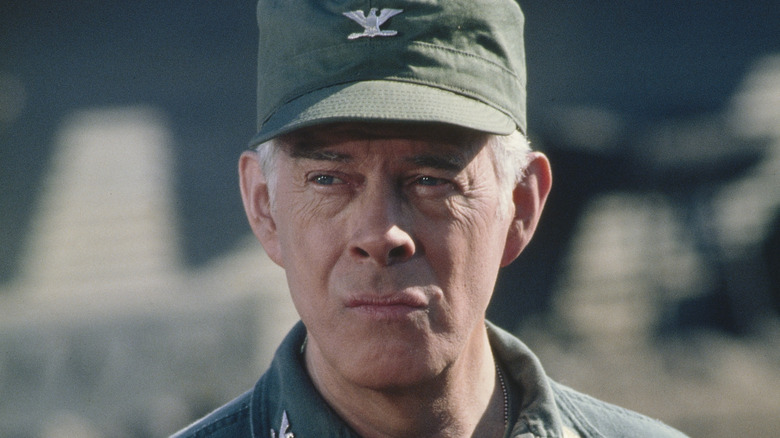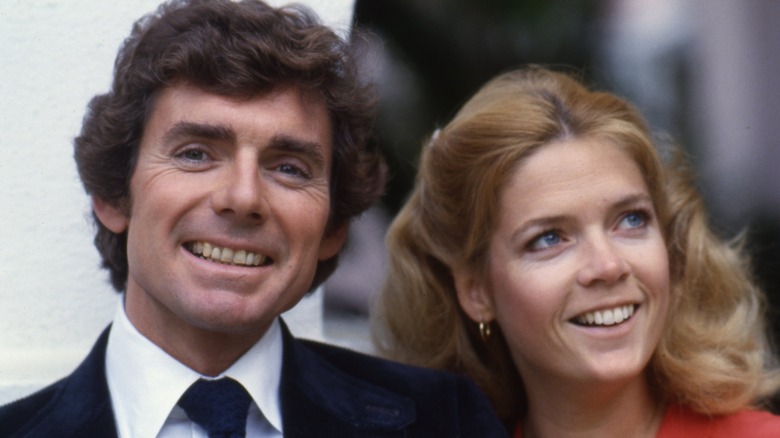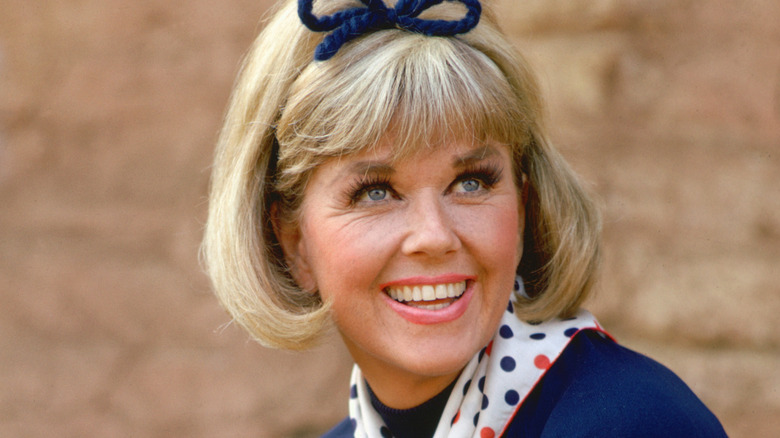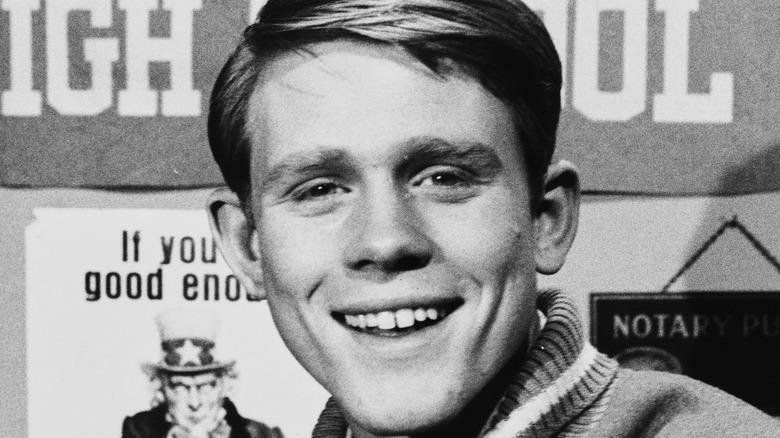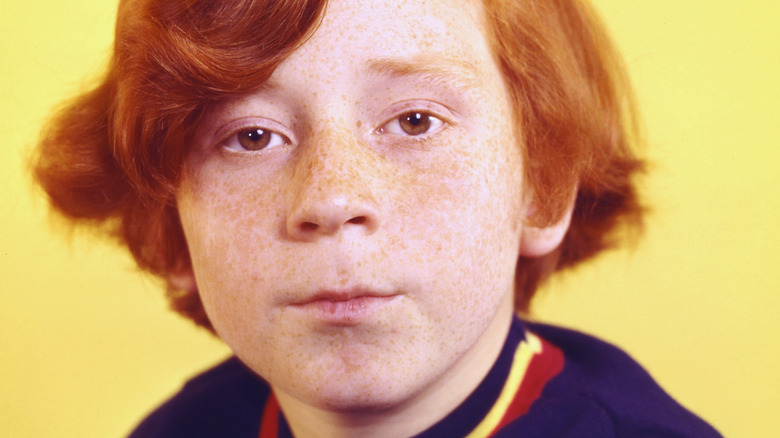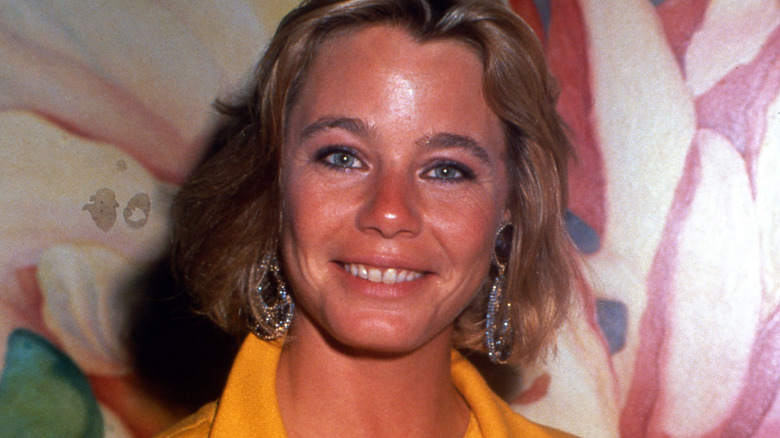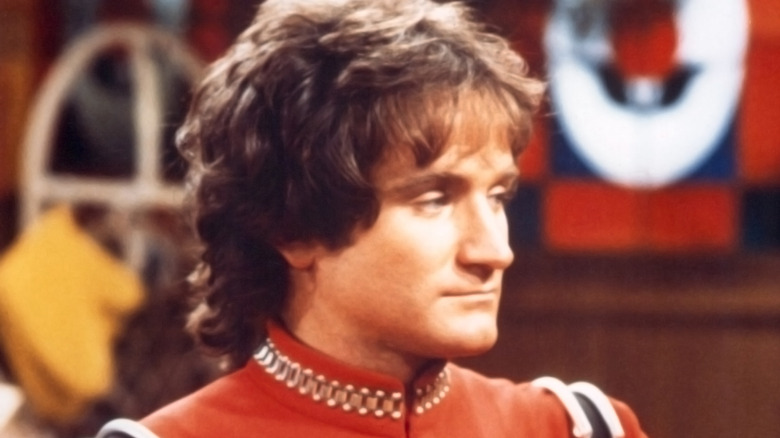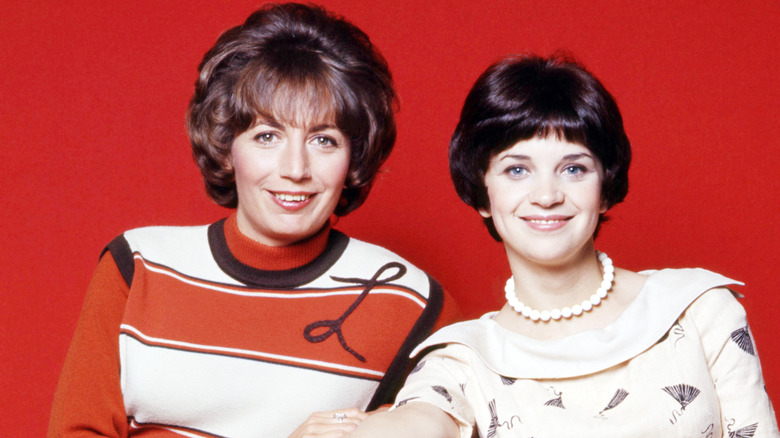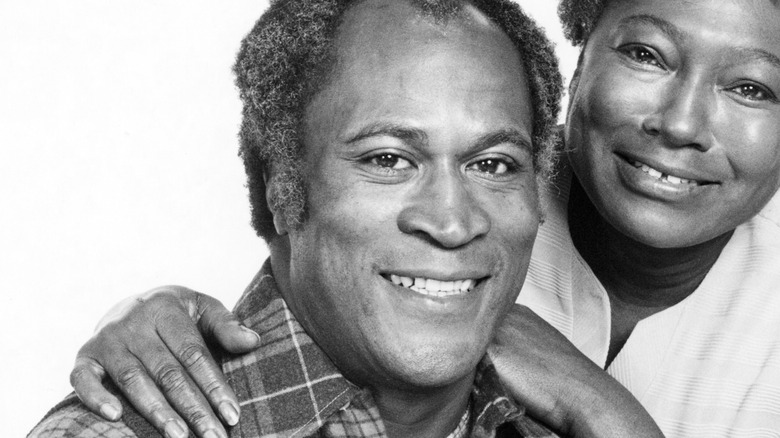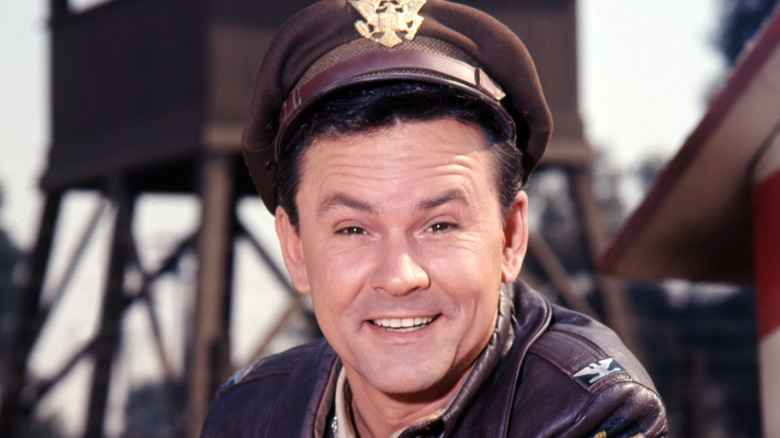Dark Secrets Of '70s Sitcom Stars
With its saturated colors, post-hippie-era good vibes, intellectual curiosity, and nonstop jokes, the most popular and enduring sitcoms of the 1970s offered a fake reality that was a bit sunnier, bubblier, and more optimistic than actual life. That's probably why the television comedies of the decade were endlessly repeated on cable TV, local stations, and on streaming services. Those laugh-track-sweetened, dated fashion-dotted programs evoke nostalgia for a certain transformative and transitory time in both entertainment and society.
But for the actors who made all those classic sitcoms a reality, working on a show was just a job. While on-screen they usually easily solved their less-than-complex problems, off-screen they were regular human beings who didn't have a writing staff. So many stars of 1970s sitcoms faced serious, traumatic, and even tragic turmoil in their personal lives. And they tried to keep those very human things under wraps for as long as possible, to keep alive the illusion or just to avoid embarrassment. Some of the biggest icons of '70s sitcoms struggled with big issues privately.
The Partridge Family's David Cassidy lied about a drinking problem
A sitcom star and a teen idol thanks to "The Partridge Family," David Cassidy disclosed his drinking problem at a 2008 fundraiser for The Alcohol and Substance Abuse Prevention Council of Saratoga County. "Tonight, I am publicly stating that I am an alcoholic," Cassidy said (via the Glen Falls Post Star). Two years later, a state Highway Patrol officer in St. Lucie, Florida, arrested Cassidy and charged him with driving under the influence. He posted bail and was released and ultimately received a sentence of one year of probation and a suspended license. Cassidy was arrested and charged for another DUI in Schodack, New York, in August 2013. For that crime, Cassidy's sentence consisted of 50 hours of community service and a $900 fine. And then in January 2014, police in California arrested Cassidy on suspicion of DUI, for which he was ordered to enter alcohol rehab and received five years of probation.
That rehab stint helped Cassidy quit drinking for good, or so he said. When he almost plunged off a stage during a February 2017 concert, Cassidy said that dementia was to blame, not alcohol. In November 2017, Cassidy died of liver and kidney failure. Just before his death, he told the producer of a Cassidy documentary that he'd never kicked alcohol. "I lied about my drinking," Cassidy said (via The Washington Post). "I did this to myself to cover up the sadness and the emptiness."
Fred Berry couldn't cope with his early fame
A definitive example of an actor forever associated with one particular role: Fred Berry. On the 1976-1979 teen sitcom "What's Happening!!" he portrayed the beret-and-suspenders-clad, constantly dancing Freddie Stubbs, a.k.a. Rerun. The actor both accepted and capitalized on his fate to be known always and everywhere as Fred "Rerun" Berry; the majority of his post-"What's Happening!!" roles were reprisals of the character or cameos as himself. Simultaneously, being Rerun left Berry undone. "I was a millionaire by the time I was 29," he told People in 1996. "The stress of success got to me. And I got heavily into drugs and alcohol. I was empty inside." A decade-long addiction also led to three suicide attempts. Berry got sober in 1985 and later became a Christian minister.
His romantic life also grew very complicated in the wake of his television success. Berry (he died in 2003 at age 52) was married a total of six times to four different women, meaning two of his spouses he married twice. He refused to publicly name estranged wife number six. "She's been trying to get her 15 minutes of fame from me off of my name and my career ever since we got married. "I don't want to give her that pleasure," Berry said to People.
After Happy Days, Erin Moran didn't have many
On the 1950s-set sitcom "Happy Days," Erin Moran played the youngest Cunningham, Joanie, from the series' first episode in 1974 until the series finale in 1984, except for a brief period from 1982 to 1983 when she led the spinoff "Joanie Loves Chachi." Moran struggled to shake her association with the role she'd played for so long, and after "Happy Days" ended, she appeared in a handful of episodes on shows like "Murder, She Wrote" and "The Love Boat" before disappearing from screens for 10 years, re-emerging to land a few bit parts in the '90s and 2000s.
In 2010, Moran lost her home to foreclosure, and police were called to evict the actor and her husband, Steve Fleischman. The couple moved in with the latter's mother in her trailer in Indiana. Two years later, that living arrangement ended — the mother-in-law tossed out Moran because she partied too much. At that point, Moran was essentially unhoused, residing in motels and living off of her share of a legal settlement awarded to "Happy Days" actors who'd sued CBS for unpaid merchandise royalties. In December 2016, Moran was diagnosed with squamous cell carcinoma, a type of cancer that left her unable to speak by February 2017. In April 2017, Moran was found dead in Harrison County, Indiana, at age 56.
Drugs took Jeff Conaway's career and life
Mere months after he hit movie theaters as Kenickie in 1978's "Grease," Jeff Conaway hit the small screen in "Taxi." He earned back-to-back Golden Globe nominations for his work as cabbie Bobby Wheeler but left "Taxi" in 1982. "Bobby was written into an empty hole. There was nowhere to go," Conaway told The Daily News Leader in 1983. In 2008, "Taxi" staff writer Sam Simon told"The Howard Stern Show" (via MarksFriggin) that Conaway didn't actually quit — he was fired. One inciting incident: Conaway missed an episode taping after he was found heavily intoxicated in his dressing room.
After "Taxi," Conaway starred in the quickly canceled series "Wizards and Warriors" and "Berrenger's" and TV episodes here and there. In 2006, he landed his highest-profile gig in ages, competing on VH1's weight loss contest "Celebrity Fit Club." After an onscreen tirade, Conaway departed the series after three episodes to enter a substance abuse rehabilitation program. He threatened the members of Oasis backstage at a concert in 2008, the same year he appeared on "Celebrity Rehab with Dr. Drew." In January 2010, Conaway fell down a flight of stairs and fractured his neck, broke a hip and arm, and suffered a brain hemorrhage. After three months in a care center, Conaway was sent home to break his addiction to painkillers; he'd previously developed a dependency after a back surgery, and he relapsed. In May 2011, Conaway died at age 60, following a medication overdose.
Mary Tyler Moore developed serious complications from diabetes
At the age of 33, Mary Tyler Moore was diagnosed with type 1 diabetes. She learned she had the condition, which requires daily and consistent injections of insulin and testing of blood glucose levels, according to WebMD, in 1970, just as production began on "The Mary Tyler Moore." Over time, people with diabetes can develop complications, and Moore was no exception. "What she was never able to overcome was the vision stealing impact of her diabetic eye disease," Moore's last husband, Dr. Robert Levine, told JDRF. "Over time, it became a great challenge for her to simply walk across a room and avoid obstacles, or judge changes in grades, or walk downstairs, or be physically active in low light."
Moore died in 2017, but she'd experienced profound vision loss years before, and kept that fact secret. The actor was almost totally blind during a "Mary Tyler Moore Show" cast reunion for a 2013 episode of "Hot in Cleveland." "We had to sit her at the table — everyone came to her," Levine told People of Moore's final acting role.
Sanford and Son's Redd Foxx died amidst crushing debt
By the time Redd Foxx landed the starring role on "Sanford and Son" in 1972, he'd been a successful nightclub comedian for decades who'd sold millions of copies of his live stand-up albums. His hit NBC sitcom significantly added to the comedian's fortune — at one point during the run of "Sanford and Son," he earned $25,000 per episode (about $173,000 in 2020s money) plus a 25% cut of the profits as a producer for his six-year stint.
A lot of that money disappeared. In 1983, Foxx declared bankruptcy, financially underwater due to $1.6 million in unpaid taxes and $800,000 in other debts. In relation to that matter, Foxx surrendered real estate owned in Los Angeles. Six years later, the Internal Revenue Service alleged that Foxx neglected to pay taxes on his earnings from 1983 to 1986 and issued liens on his property and possessions to collect on a $755,166 debt. Much of Foxx's property, including a substantial jewelry collection, was auctioned off to pay down the bill.
In October 1991, two years after his second major debt crisis, Foxx died of a heart attack on the premises of his sitcom "The Royal Family." The comedian was still in tremendous debt at that point, with $3.6 million still outstanding to the IRS.
M*A*S*H's Harry Morgan was arrested for domestic abuse in his 80s
Harry Morgan started acting in movies in the 1940s, but he'd eventually be known as a TV star. He starred in the long-running '50s sitcom "December Bride," the '60s comedy "Pete and Gladys," the late '60s "Dragnet" reboot," and from 1974 to 1983, as Col. Sherman T. Potter" on the Korean War-set "M*A*S*H." His career wound down with some more TV sitcom and drama appearances, only to be arrested and charged over a domestic violence case in July 1996. Police arrived at the home of 81-year-old Harry Morgan and his 70-year-old wife, Barbara, in response to a call. After reportedly hearing a woman's screams, they discovered Barbara Morgan with an injured foot, a cut by her eye, and bruising on the arm — all of which sent her to the hospital. Barbara said that her husband had been arguing with her at a dinner party before they went home, where things got physical.
Harry faced a charge of misdemeanor spousal battery but arranged a deal with the court. Since he finished a domestic violence diversion course, a West Los Angeles Municipal Court judge dropped the charge of misdemeanor spousal battery.
The darkness behind Bridget Loves Bernie
The most-watched new series of the 1972-1973 season, and the No. 5 show overall, was "Bridget Loves Bernie." The romantic sitcom examined the day-to-day life and struggles of an interfaith couple — Bridget came from a Roman Catholic family and Bernie was Jewish. Groups representing the American Jewish community took issue with that premise. According to the Jewish Telegraphic Agency's Daily News Bulletin, Rabbinical Assembly of America Vice President Rabbi Wolfe Kelman labeled the series, "An insult to some of the most sacred values of both the Jewish and Catholic religions." The Rabbinical Council of Washington called for a boycott and asked the public to send complaint letters to CBS. By February 1973, groups including the Commission on Interfaith Activities of the Union of American Hebrew Congregations and the Union of Orthodox Congregations of America had joined the protest, alleging that the show used harmful stereotypical portrayals of Jewish people and also promoted interfaith marriage. At the end of the TV season, CBS canceled "Bridget Loves Bernie."
"Bridget Loves Bernie" stars Meredith Baxter and David Birney became a couple and were married from 1974 to 1989. For Baxter, the marriage was toxic and physically violent. "It was so sudden and unexpected, I couldn't tell you which hand hit me, or even how hard," she wrote in "Untitled." The actor dealt with the abuse with alcohol, but stopped drinking in 1990.
Doris Day was forced to do The Doris Day Show
Doris Day had been a movie star since the late 1940s, and in 1968, she starred in two of the year's biggest hits, "With Six You Get Eggroll" and "Where Were You When the Lights Went Out?" That same year, she made the move from headlining movies to starring on a CBS sitcom. "The Doris Day Show" ran well into the 1970s, and its existence took its star by surprise.
Day's husband, Martin Melcher, was also her manager, and he handled his wife's professional affairs without her knowledge. After Melcher's death in 1968, Day learned that she was on the hook to star in a weekly sitcom. "All without anyone ever asking me," Day told OK! in 1996 (via Express).
The actor may have been able to get out of her obligations, but she was left with so little money after Melcher's death that she needed the work. Melcher had given free rein of Day's finances to lawyer Jerome Rosenthal, who embezzled some and sunk the rest into sketchy land, finance, and energy projects. After Melcher died, Rosenthal seized more of Day's fortune. She sued, and the case was decided in 1974 (a year after "The Doris Day Show" ended), with Day set to receive a payout of $22.8 million, of which she'd ultimately receive a fraction. Day died in 2019 at age 97, retiring from acting after wrapping "The Doris Day Show."
Ron Howard starred in Happy Days to dodge the draft
Working as an actor in film and television since he was a toddler, Ron Howard's first major role came in the 1960 to 1968 sitcom "The Andy Griffith Show," playing Opie Taylor. In the few years after that series ended, Howard appeared in episodes of more than a dozen TV shows, and in 1972 was offered a role in "Love and the Happy Days," an installment of ABC's comedy anthology "Love, American Style" intended to serve as a pilot for a standalone series.
But Howard was hesitant to sign up for another potentially long-running TV series. However, making the show offered his best shot at avoiding getting drafted to fight in the Vietnam War; Howard's draft number was low, meaning he'd likely have to serve if called. He would have preferred to attend USC's film school, into which he was accepted, but that institution had done away with student draft deferments. But getting cast in an ongoing TV series might work. "If your employment was directly related to the employment of 30 or more people, you could get a work deferment," Howard told the Television Academy.
Howard was saved from military service nevertheless when the government eliminated the draft a few months after ABC declined to order a series based on his pilot. But then in 1974, "Love and the Happy Days" morphed into a show after all: "Happy Days."
Danny Bonaduce was homeless and addicted to drugs
On the family band sitcom "The Partridge Family," Danny Bonaduce portrayed joke-cracking bass player Danny Partridge. Bonaduce turned 15 right after the comedy wrapped its run in 1974, at which point he moved out of the family home, became a heavy user of substances, and became unhoused in Hollywood.
"I lived right behind this dumpster, but I lived in my car," Bonaduce explained on "Oprah: Where Are They Now?" in 2013 (via HuffPost). "I'd wake up, kind of wipe my eyes, and I'd go right through the little arch and I'd be in front of Grauman's Chinese Theater, where everybody's footprints are." With "The Partridge Family" still fresh in the public consciousness, he'd pose for tourists' photos and sign autographs. "It was totally embarrassing to be famous and homeless."
Sobriety proved evasive for Bonaduce (he kicked drugs for good in 2011) but he'd still find himself in trouble with the law. In 1991, he was arrested after allegedly physically assaulting and robbing a sex worker in Phoenix. He was charged with felony flight, aggravated assault, and robbery, but was released after posting an $8,400 bond payment.
Susan Dey secretly battled health issues
In the early 1970s, teenage actor Susan Dey was thrust into fame as Laurie Partridge, part of a familial pop-rock band on the ABC sitcom "The Partridge Family." After that series ended in 1974, Partridge popped up for an episode of numerous TV series, finally launching a major comeback in 1986 with a thrice-Emmy-nominated role as attorney Grace Van Owen on "L.A. Law." It was during that era of her career when the usually reserved Dey started to discuss her personal life and history at length.
As a teenager, and during her time on "The Partridge Family," Dey developed the eating disorder anorexia. Driven by the mental illness to keep her weight down, Dey at one point only ate carrots, causing her skin to develop an orange hue. Years later, Dey dealt with alcoholism and found sobriety with the help of Alcoholics Anonymous. "After I had been sober a year, I was given a cake at a meeting," she told Parade (via Deseret News) in 1993. "The tabloids ran a big story about it. I was furious that they had planted an informant in my AA group."
Robin Williams was extremely inappropriate on the Mork and Mindy set
Robin Williams brought his frenetic style of comedy to television in 1978, portraying zany extraterrestrial Mork on "Mork and Mindy." During the show's four-year run, Williams became addicted to cocaine, using the drug to self-medicate. "Cocaine for me was a place to hide. Most people get hyper on coke. It slowed me down," Williams told People in 1988. He abruptly stopped using cocaine and alcohol in 1982, following the overdose death of his close friend John Belushi and when his wife at the time became pregnant with their first child.
During the height of his cocaine use, Williams committed numerous casual acts on the set of "Mork and Mindy" that could be classified as sexual misconduct or assault. "He'd look at you, really playful, like a puppy, all of a sudden. And then he'd grab your t*** and then run away," co-star Pam Dawber said in David Itzkoff's "Robin." "And somehow he could get away with it. It was the seventies, after all." "Mork and Mindy" director Howard Storm corroborated in "Robin": "He'd be doing a paragraph and in the middle of it he would just turn and grab her a**. Or grab a breast." Producer Garry Marshall recalled in the book Williams' on-set de-robing habit: "He would take all his clothes off, he would be standing there totally naked and she was trying to act. His aim in life was to make Pam Dawber blush."
Why Cindy Williams quit Laverne and Shirley
A ratings-dominating hit in the mid-1970s, "Laverne and Shirley" remained a top 30 show into the early 1980s, with viewership slipping in its eighth season in 1982-83. The sitcom lost what had made it so special — the chemistry between actors Penny Marshall and Cindy Williams in their title characters' shared adventures vanished when Williams abruptly departed the long-running series.
In 1982, Williams learned she was pregnant. "Laverne and Shirley" producers were reportedly very supportive at first, offering to make Shirley pregnant, building a shooting schedule to be more accommodating to the actor's health needs, and then eliminating her character from 10 episodes. Williams, however, claimed that producers refused to pay her for the episodes in which she wouldn't appear, and that it was all a ruse to get her off the show permanently to make it a starring vehicle for Marshall. Williams sued, and it was quietly settled without a trial, but the actor never appeared on "Laverne and Shirley" again.
John Amos criticized Good Times and got fired for it
Norman Lear's "All in the Family" spawned the spinoff "Maude," which in turn begat "Good Times," a 1974 to 1979 spinoff with a premise not widely explored on TV at the time, centered on a Black family living in a Chicago housing project. John Amos portrayed patriarch James Evans for the first three seasons of "Good Times," until the character was written out in the two-part Season Four opener "The Big Move." After taking a high-paying job in Mississippi, the character dies offscreen in a car accident.
At the time, "Good Times" personnel told the media that Amos had left the series to pursue a movie career. He'd been terminated instead. "Norman Lear called me a month ago and told me my option was not being picked up. That's the same as being fired," Amos told Jet in 1976. Amos and Lear had often sparred, with the actor upset that his character may have sent the wrong message and set a bad example as a Black man with the inability to keep a job. "We did have some very strong creative differences as to how James Evans should be portrayed," Amos told the Herald-Journal in 1994.
The secret life of Bob Crane
The World War II sitcom "Hogan's Heroes" concluded its run in 1971. Star Bob Crane moved on to the short-lived "The Bob Crane Show" and performed in dinner theater productions. While starring in "Beginner's Luck" in Scottsdale, Arizona, in June 1978, the 49-year-old Crane was discovered dead in his apartment with a cord wrapped around his neck. The Maricopa County Medical Examiner reported that Crane died after receiving multiple strikes to the head with a blunt object.
The murder investigation helped expose the details of Crane's private life. Publicly perceived as a married father of multiple children, Crane reportedly carried on countless extramarital encounters and recorded those trysts on videocassettes and Polaroids. Assisting him in the acquisition, set-up, and execution of his operation was a video gear salesman named John Carpenter. By 1978, Crane had tired of the arrangement. Two days before he died, Crane called his son, Robert. "He says, 'I am making changes,'" the younger Crane told Entertainment Weekly. "He wanted to lose people like John Carpenter, who had become a pain in the butt. He wanted a clean slate."
Across three separate investigations, Crane's murder was never solved. But in 1992, Carpenter was charged for the crime, with prosecutors suggesting a disappeared tripod could have been the blunt object that delivered the fatal blows to Crane. With a lack of evidence, including inclusive DNA testing of blood found at the scene, Carpenter was acquitted.
Willie Aames' financial devastation
Willie Aames got very rich playing goofballs on two popular TV comedies. In the 1970s, he played teenager Tommy Bradford Jr. on "Eight is Enough," and in the '80s, he portrayed Buddy Lembeck, best friend of the title character on "Charles in Charge." "At the very peak I was making a little over a million dollars a year," he told "Entertainment Tonight" (via HuffPost). "Then suddenly there was no job, no bank account, no wife, no child."
Aames' accountant talked the actor into pouring his fortune into an investment in a coal mine. The deal soured, and Aames wound up unenriched as well as in debt to the IRS for $400,000. "When my house went into foreclosure, that's when it was really devastating for me because I lost everything," Aames told The Wrap.
Aames was left alone after his spouse had left him, taking their daughter with her, which may have led to a suicide attempt. "I gave people a lot of cause for concern and I think they acted on those concerns. I'm glad they did. Beyond that, that time period is a blur," he told ET. With about $5 to his name and unhoused, Aames lived with friends when possible, but otherwise resorted to sleeping in public parks and parking garages.
